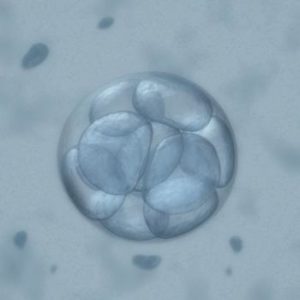 Senior author Dr. Tony Perry, from the Department of Biology & Biochemistry at Bath, and colleagues publish their findings in the journal Nature Communications.
Senior author Dr. Tony Perry, from the Department of Biology & Biochemistry at Bath, and colleagues publish their findings in the journal Nature Communications.
In the traditional sense, fertilization occurs when a sperm meets a female egg. Once this occurs, the egg “reprograms” the sperm, whereby various chromosomal and DNA changes occur that enable the sperm to divide and produce the specialized cells that make up an organism – a process known as totipotency.
Since the fertilization process was first unraveled in the late 1800s, scientists have long believed that only an egg has the ability to reprogram a sperm in order to trigger embryonic development.
Previous studies have shown it is possible to “trick” a non-fertilized egg into forming an embryo, creating what are called parthenogenotes. However, because these embryos are absent of sperm, which is key for development, they have not survived more than a few days.
ADVERTISEMENT
Treat Your Postmenopausal Osteoporosis
Now, Dr. Perry and colleagues reveal that in mice, injecting sperm into parthenogenotes can spur full-term embryonic development, leading to the birth of healthy offspring.
Sperm does not rely on the egg to be reprogrammed
For their study, the researchers injected sperm nuclei into mice parthenogenotes that were chemically treated to contain a single set of unpaired chromosomes, as opposed to a set of paired chromosomes that usually arise when a sperm meets an egg.
The team found the technique led to the production of healthy offspring, with up to a 24 percent success rate. In comparison, non-injected mice parthenogenotes produced no offspring, while a 2 percent success rate occurred with nuclear transfer cloning.
Though injected embryos had chromosomal and DNA similarities to non-injected embryos, the researchers note that the injected embryos demonstrated different cellular processes.
This observation, they say, suggests that there are other ways in which sperm can be reprogrammed to trigger embryonic development – that is, sperm is not solely reliant on the egg.
“It had been thought that only an egg cell was capable of reprogramming sperm to allow embryonic development to take place.
Our work challenges the dogma, held since early embryologists first observed mammalian eggs around 1827 and observed fertilization 50 years later, that only an egg cell fertilized with a sperm cell can result in a live mammalian birth.”
Dr. Tony Perry
While there is a long way to go before this fertilization technique can be tested in humans, the researchers believe their study opens the door to a wealth of possibilities for fertility treatments.
“One possibility, in the distant future, is that it might be possible that ordinary cells in the body can be combined with a sperm so that an embryo is formed,” Dr. Perry told BBC News.
This could make it possible for two men to have a child; one man could donate an ordinary cell, while the other man could donate sperm.
MNT DT






